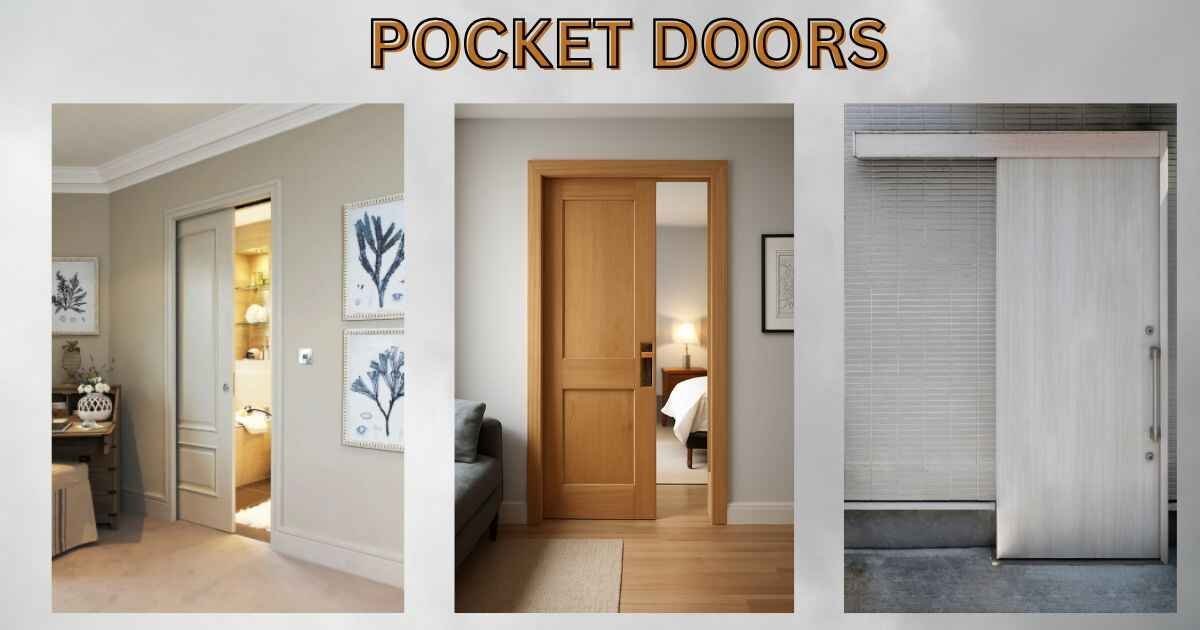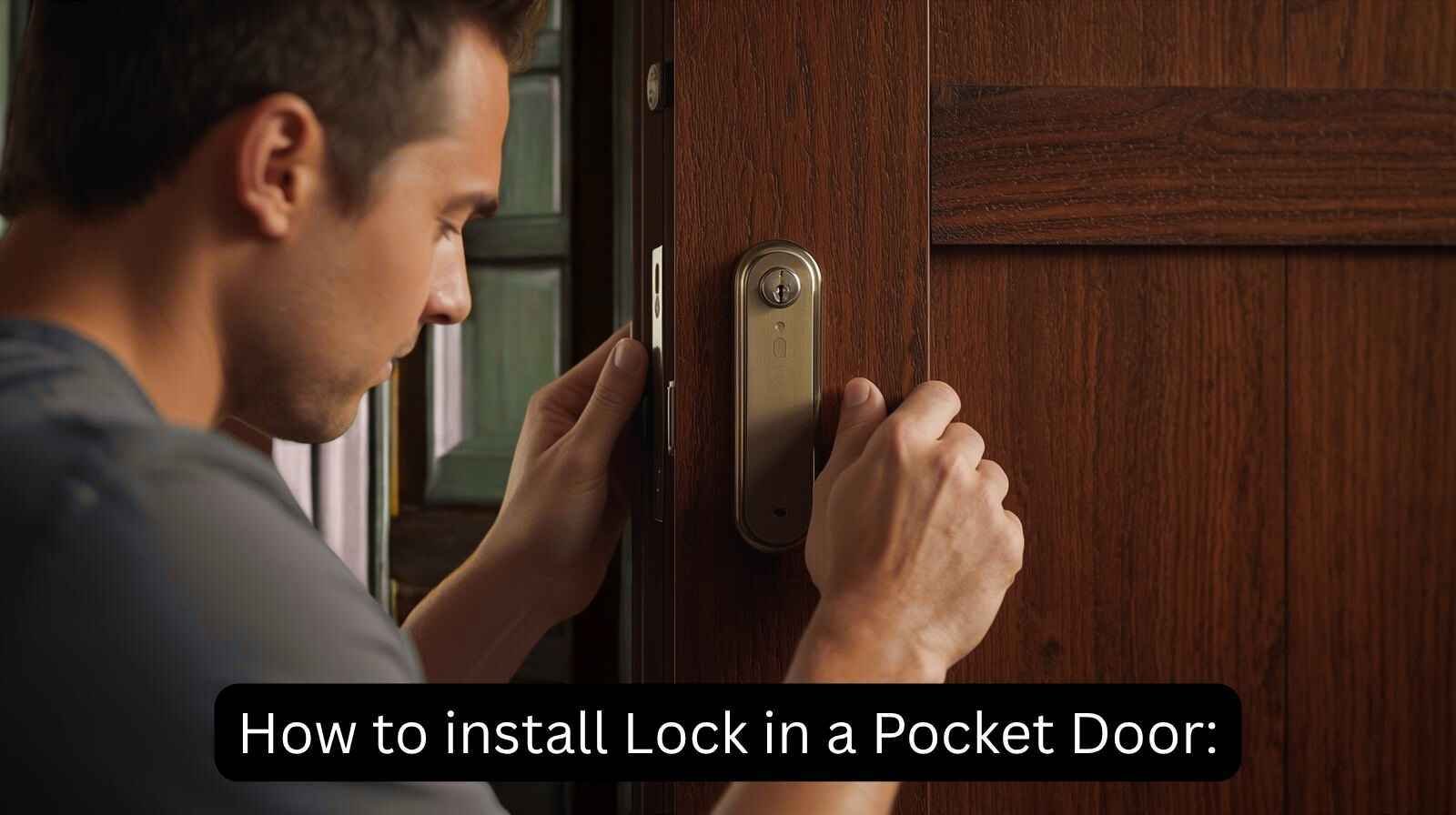What Is a Pocket Door?
A pocket door is a sliding door that glides smoothly into a hollow cavity inside the wall rather than swinging open like a regular hinged door. Once opened, it completely disappears into the wall, creating a clean, modern, and space-efficient look or A pocket door is a sliding door that disappears into a compartment within the wall when opened, saving space.
Pocket doors are ideal for small spaces, such as bathrooms, closets, pantries, or laundry rooms, where traditional doors take up valuable floor area. They’re also popular in modern open-concept homes for creating flexible partitions between rooms.
Why Pocket Doors Are Making a Comeback
Modern homeowners are embracing pocket doors for their blend of style, functionality, and innovation. They not only save space but also add a sleek and elegant touch to interiors. With improved pocket door hardware and installation kits available today, they’re more durable and easier to install than ever before.
Top Benefits of Installing a Pocket Door
1. Space-Saving Design
A standard swinging door requires several feet of clearance. In contrast, a pocket door slides neatly into the wall, freeing up that area for furniture, decor, or walking space. This makes it a top choice for compact apartments, condos, and tiny homes.
2. Sleek & Modern Aesthetic
Pocket doors create a seamless, minimalist look. They work perfectly in both contemporary and traditional interiors. Glass pocket doors, for instance, bring natural light into darker areas, while solid wood options enhance privacy and warmth.
3. Accessibility and Convenience
Pocket doors are easy to operate and ideal for accessible spaces. Many models now come with soft-close features that allow smooth and quiet closing — a perfect touch for homes with children or elderly residents.
Understanding Pocket Door Hardware
The hardware behind a pocket door is what makes it glide effortlessly. Quality hardware ensures durability, quiet operation, and ease of use.
Track Systems and Rollers
At the heart of the mechanism lies the track system — usually installed above the doorway. The rollers run along this track, allowing the door to slide smoothly into its wall cavity. Choose heavy-duty ball-bearing rollers for long-term performance.
Pocket Door Lock Options
A pocket door lock is essential for privacy in rooms like bathrooms and bedrooms. Options include:
- Passage locks – for areas where locking isn’t required
- Privacy locks – ideal for bathrooms or bedrooms
- Keyed locks – suitable for offices or areas that need security
Look for locks that match your interior finish (like brushed nickel, matte black, or brass) to maintain visual harmony.
Handles and Pulls
Since pocket doors slide into the wall, they use flush pulls or recessed handles that sit flat on the door surface. These handles come in a wide variety of styles and finishes to complement your room’s decor.
All About the Pocket Door Kit
A pocket door kit is a ready-to-install package that simplifies the setup process. It typically includes:
- A metal or wooden frame
- Track and roller system
- Door guides and stops
- Optional lock and handle
Preassembled Kits vs. Custom Builds
- Preassembled kits are beginner-friendly, designed for standard wall sizes and door openings.
- Custom builds offer flexibility for unique spaces or oversized doors but usually require professional installation.
DIY Installation Tips
- Measure accurately — door height, width, and wall thickness.
- Inspect the wall — ensure there are no pipes or electrical lines where the door will slide.
- Install the track level — uneven tracks cause misalignment.
- Use a soft-close feature — for quiet and smooth performance.
If DIY feels overwhelming, hiring a professional installer ensures perfect alignment and long-term durability.
Choosing the Perfect Pocket Door
Material Selection
- Wood pocket doors: Provide warmth, privacy, and sound insulation.
- Glass pocket doors: Allow natural light and create a more open, airy environment.
Application Type
- Interior pocket doors are commonly used for bedrooms, kitchens, or laundry rooms.
- Exterior pocket doors (less common) require weather-sealed frames and heavy-duty hardware to resist outdoor elements.
Common Pocket Door Problems & How to Fix Them
Even the best doors can face occasional issues. Luckily, most are easy to fix:
1. Sticking or Dragging Door
This usually happens due to dirt or misaligned rollers. Clean the track and ensure the frame is level.
2. Noisy or Wobbly Door
Replace old rollers with high-quality pocket door hardware. Lubricate metal parts periodically for smoother operation.
3. Difficulty Locking
If your pocket door lock isn’t engaging properly, check the alignment between the latch and strike plate. Minor adjustments often solve the problem.
Cost of Pocket Doors and Installation
The total cost depends on the door type, materials, and installation method.
| Component | Average Cost (USD) |
| Basic Pocket Door Kit | $150 – $300 |
| Premium Hardware & Track | $400 – $700 |
| Professional Installation | $200 – $600 |
| Total Estimated Cost | $350 – $1,200 |
While DIY can save money, professional installation ensures precision and longevity.
Top Pocket Door Brands to Consider
Here are a few trusted names in the market known for their quality and reliability:
- Johnson Hardware – Excellent track systems and quiet rollers
- Eclisse – Sleek, high-end European designs
- Häfele – Modern finishes and advanced locking options
- L.E. Johnson – Durable and easy-to-install pocket door kits
Each brand offers various kits suited for residential and commercial spaces.
Safety and Building Code Guidelines
Before installing a pocket door, always check your local building codes. Avoid placing wiring, switches, or plumbing inside the wall cavity where the door slides. Ensure structural integrity and use recommended framing materials to support the pocket system.
Frequently Asked Questions (FAQs)
1. What rooms are best suited for pocket doors?
Bathrooms, closets, and pantries are ideal since they benefit most from the extra space.
2. Can I convert my existing hinged door into a pocket door?
Yes, but you’ll need to remove drywall and possibly reframe part of the wall.
3. How long does it take to install a pocket door?
Professionals typically finish in about 4–6 hours; DIYers might take a day.
4. Are pocket doors soundproof?
Not entirely, but solid wood doors with proper seals offer decent sound reduction.
5. What comes in a pocket door kit?
Usually, the frame, track, rollers, and guides — sometimes locks and handles.
6. Do pocket doors require regular maintenance?
Minimal! Just keep the track clean and lubricate the rollers annually.
Final Thoughts
A pocket door is an elegant solution for saving space while enhancing your home’s visual appeal. Whether you’re working with a small apartment or designing a luxury home, pocket doors provide functionality without compromising style.
By choosing the right pocket door hardware, kit, and lock, you can create a seamless, space-efficient design that lasts for years. Simple, beautiful, and practical — that’s the charm of a pocket door.
If you want to know how to inatall a lock of pocket door visit: daily life ways.








